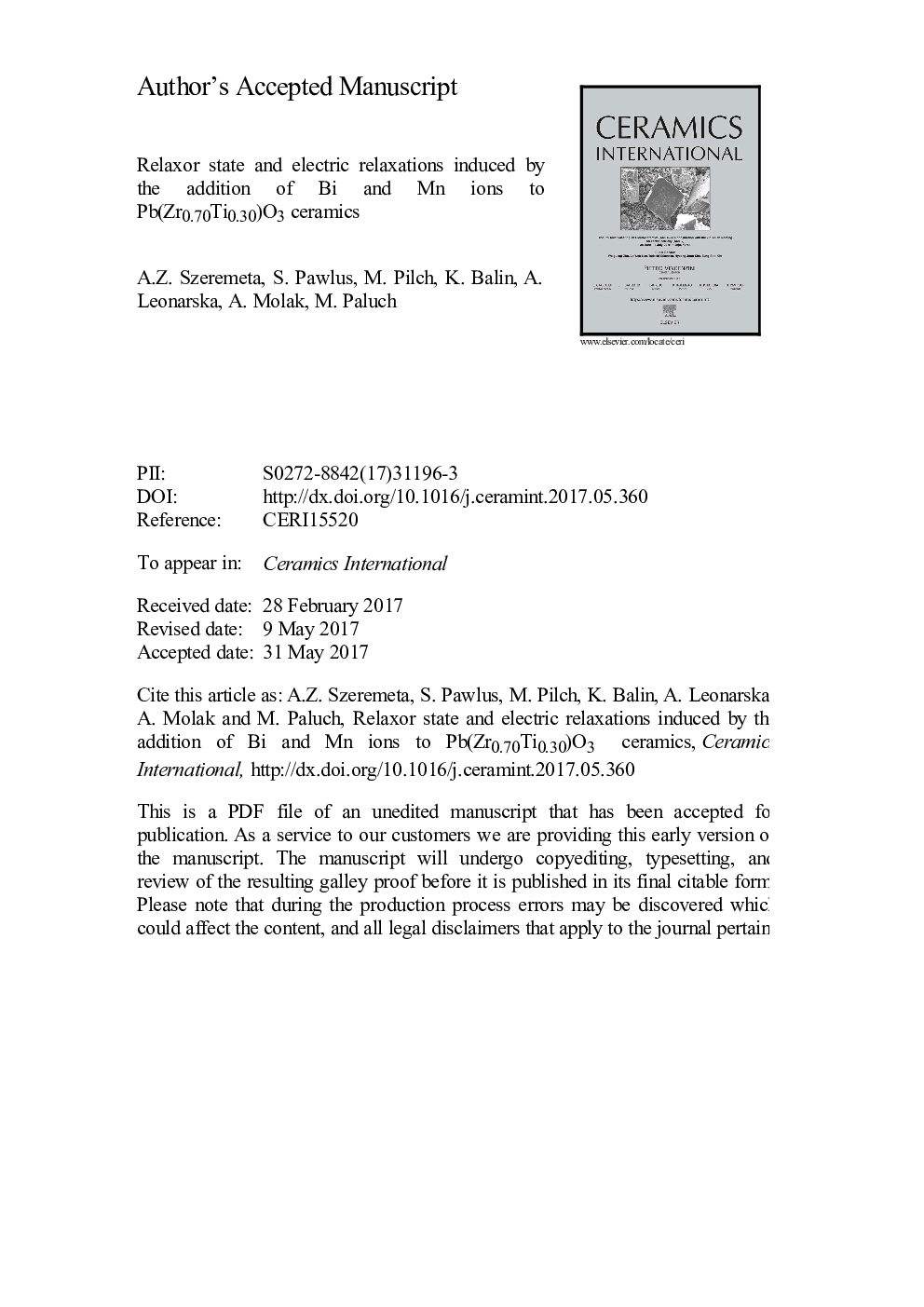| Article ID | Journal | Published Year | Pages | File Type |
|---|---|---|---|---|
| 5437452 | Ceramics International | 2017 | 29 Pages |
Abstract
The (1 â x)Pb(Zr0.70Ti0.30)O3-xBiMn2O5 ceramics (PZT-BM), where x = 0, 0.02, 0.055, 0.11, 0.15, 0.22 and 1, were studied. We determined how addition of nonpolar BM influenced electrical properties of the ferroelectric PZT ceramics. Impedance spectroscopy measurements in broad frequency and temperature ranges were performed and several contributions to impedance response were identified. A crossover to the relaxor state was observed in the PZT-BM ceramics by doping with Bi and Mn ions. The relaxation times for the electric conductivity relaxation and dipole relaxation were estimated from electric modulus representation of the data. Activation energy values of the conductivity process, estimated for T > 510 K, decreased from 0.82 to 0.37 eV when BM content increased. The occurrence of the high-frequency dipole relaxation was assigned to the charge transfer of Ti3+/Ti4+, Zr3+/Zr4+ and Mn3+/Mn4+ ions. Occurrence of the ferroelectric relaxor features were deduced from the non-Arrhenius dependence of the relaxation times. Superposition of the relaxor features and electric relaxations provides high value permittivity (εⲠ> 1000) in wide temperature range (~ 250-573 K). This effect corresponds to the disorder and precipitation of ions that were shown using x-ray photoelectron spectroscopy and the time of flight-secondary ion mass spectrometry.
Related Topics
Physical Sciences and Engineering
Materials Science
Ceramics and Composites
Authors
A.Z. Szeremeta, S. Pawlus, M. Pilch, K. Balin, A. Leonarska, A. Molak, M. Paluch,
